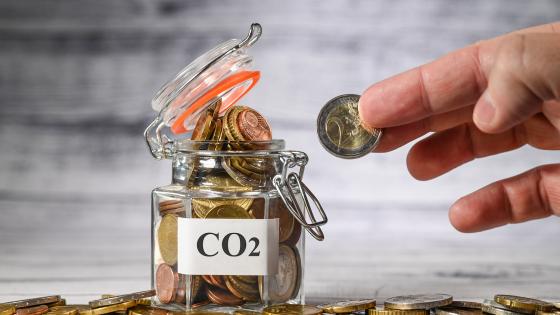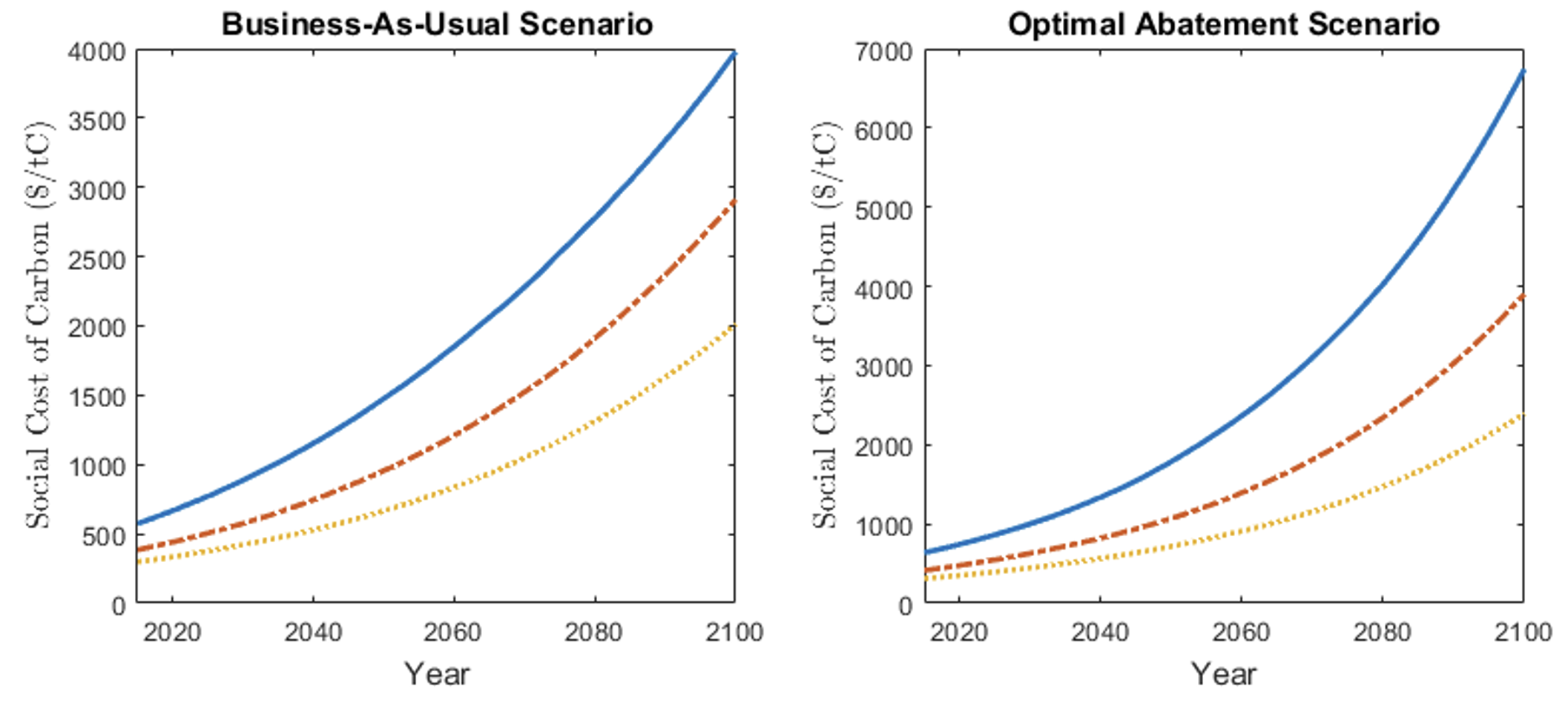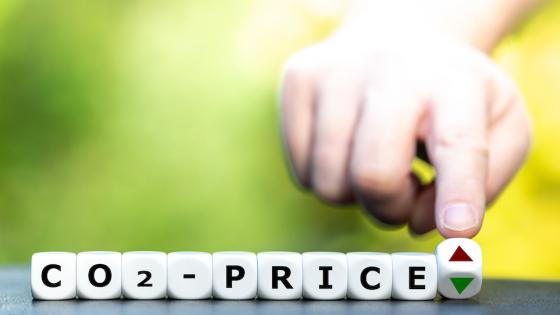The social cost of carbon (SCC) measures the monetary value of the current and future damage caused by one additional unit of carbon emission today and has been adopted by many governments to motivate and/or implement climate policies. For example, in the US the social cost of carbon has been widely used in regulatory impact assessments of climate policies, federal carbon tax legislation, and the development of energy efficiency standards for appliance (Rennert et al. 2022). The social cost of carbon is usually calculated using integrated assessment models (IAMs), which consist of a macroeconomic model and a climate block. There are three integrated assessment models used by the Interagency Working Group (IWG) to generate the social cost of carbon: namely, the Dynamic Integrated Climate-Economy (DICE) model (e.g. Nordhaus 2017), the Policy Analysis of the Greenhouse Effect (PAGE) model (e.g. Hope et al. 1993), and the Climate Framework for Uncertainty, Negotiation and Distribution (FUND) model (e.g. Anthoff and Tol 2010). In these models, emitted carbon emissions are generated in the economic block, which leads to a higher concentration of CO2 in the atmosphere. This in turn accelerates global warming and leads to more climate-related disasters which then feed back into the economic block of the integrated assessment model.
Recent integrated assessment models account for rich stochastic dynamics in the economic and climate system and show that the uncertainty in the climate system significantly changes the social cost of carbon (Cai and Lontzek 2019, Olijslagers and van Wijnbergen 2019, Gollier 2021). Climate uncertainty in these models is usually measured by climate volatility, a direct measure of the variability of climate damages. However, climate volatility fails to capture another aspect of climate uncertainty: climate volatility itself is stochastic, which introduces an additional source of risk. Climate scientists have warned that extreme weather events will become more frequent and more intense with human-induced climate change, but we do not know exactly when and to what extent climate volatility will increase (Reidmiller et al. 2018, IPCC 2021). This renders climate volatility itself a stochastic process. In our paper (Lin and van Wijnbergen 2023) we specifically introduce uncertainty about climate volatility and show that this high-order climate uncertainty significantly increases the social cost of carbon.
We solve for the social cost of carbon using an intertemporal asset-pricing approach and a dynamic stochastic integrated assessment model where representative agents are endowed with Duffie-Epstein preferences (Duffie and Epstein 1992). Consider a pure-exchange economy where climate change negatively influences economic growth through damages from extreme weather events. The arrival of these extreme weather events follows a Poisson process, and their frequency and intensity characterise the level of climate volatility. In addition, climate volatility itself is modelled as a stochastic process which tends to increase over time. Since research is still ongoing to pinpoint exactly when and how much climate volatility changes in response to climate change, we model stochastic climate volatility as a one-off positive so-called Poisson shock to the frequency and one to the intensity of climate disasters, and experiment with different arrival rates and sizes of that shock.
Ex-ante it is unclear whether the social cost of carbon will increase or decrease under stochastic climate volatility. Like in Olijslagers and van Wijnbergen (2019), the social cost of carbon goes up with a higher certainty equivalent of climate damages but down with a higher stochastic discount rate. And stochastic volatility will lead to a higher certainty equivalent of climate damages because of the risk of more extreme climate damages in the future; but the impact of stochastic climate volatility on the stochastic discount factor is ambiguous. On the one hand, agents facing higher climate uncertainty require a larger risk premium, which increases the discount rate (lowers the stochastic discount factor). On the other hand, extreme weather events are getting worse under climate change, which causes larger damages to the economy. This leads to a stronger precautionary saving effect and a correspondingly lower interest rate (or, equivalently a higher stochastic discount factor). The net impact of stochastic climate volatility on the social cost of carbon depends on the interaction between all these channels.
To show the importance of the uncertainty about climate volatility, we compare the social cost of carbon in the same year (e.g. 2025) from two scenarios that differ in whether the climate volatility is stochastic. In the first scenario, climate volatility (either the frequency or the intensity of climate damages) doubles after a positive stochastic shock. In the second scenario, a shock of the same size happens at some deterministic date. The arrival time of the shock in the second scenario is set as the expected arrival time of the shock in the first scenario. Table 1 shows that, compared with the deterministic case, the stochasticity of climate volatility increases the social cost of carbon by more than 30%, and this result is robust under different combinations of preference parameters.
Table 1 Social cost of carbon (in US dollars per tonne of carbon) under stochastic and deterministic climate volatility
Notes: The social cost of carbon (USD per ton of carbon, or $/tC) under (i) stochastic and (ii) deterministic climate volatility in Year 2025 as a function of preference parameters (risk aversion and elasticity of intertemporal substitution, EIS).
Our model also allows us to evaluate alternative climate policies. We compare the social cost of carbon from two policy scenarios: governments do not impose any regulatory restrictions to reduce carbon emissions (the business-as-usual scenario, BAU), or they choose the optimal abatement rate, leading to lower carbon emissions for a given time path of economic activity (the optimal abatement scenario, OA). Figure 1 shows the numerical results from two policy scenarios assuming that the frequency of climate disasters is expected to become two versus four times larger in 100 years. In both scenarios stochastic climate volatility leads to a higher social cost of carbon, for two reasons. First, damages from extreme weather events will be more volatile if the climate condition continues to deteriorate, which raises the certainty equivalent of climate damage and thereby the social cost of carbon. Second, we show that the uncertainty about climate volatility in balance leads to a lower (growth-adjusted) discount rate. Since both effects raise the social cost of carbon we obtain unambiguously that incorporating stochastic volatility leads to a higher social cost of carbon.
Figure 1 The social cost of carbon under different policy assumptions
Notes: The social cost of carbon ($/tC) in the business-as-usual (left) and the optimal abatement (right) scenarios. Climate disasters happen four times (blue) or two times (red) as frequent as today, after the positive Poisson shock.
Moreover, we find that the social cost of carbon is larger in the optimal abatement scenario than in the business-as-usual scenario. This is because abatement leads to lower emissions and therefore to a gradually lower concentration of CO2; as a result, it triggers less or smaller climate damages as time goes by and thus to higher future output. This in turn leads to a higher social cost of carbon since the social cost of carbon is proportional to economic output.
Next, we solve the model when the intensity of climate disasters is stochastic instead of the arrival rate. For equal expected damage from climate disasters, the social cost of carbon is larger under stochastic jump size uncertainty than when the frequency of disasters is stochastic. Intuitively, this is because for risk averse agents, the certainty equivalent of climate damages from marginal carbon emissions increases proportionally under a shock to disaster frequency, but more than proportionally under a shock to disaster intensity.
Finally, we first derived all these results using a baseline model with an exogenous time path for emissions since this allows us to analytically solve the model. The exogenous emissions setup allows us to better identify the channels through which stochastic climate volatility influences the social cost of carbon. But we then extend the model to a more realistic endogenous-emissions setup where emissions are linked to the output process. Not surprisingly, introducing stochastic emissions leads to qualitatively similar results but to a generally even higher social cost of carbon. Also, we show that assuming that higher volatility arises gradually instead of as an instantaneous shock (a more realistic scenario according to Dietz et al. 2021) leaves all our results qualitatively the same.
Our focus is on climate volatility risk and on its implications for the social cost of carbon. Basic economic theory suggests that an optimal carbon tax be set equal to the social cost of carbon, yet this may be an oversimplified answer to a complex policy problem involving global coordination and undesirable distributional consequences. Therefore, we do not address the challenges in implementing carbon prices in our paper, although they are of vital importance in policy discourse (Klenert and Hepburn 2018, Parry et al. 2022).
References
Anthoff, D and R Tol (2010), “On international equity weights and national decision making on climate change”, VoxEU.org, 29 November.
Cai, Y and T S Lontzek (2019), “The social cost of carbon with economic and climate risks”, Journal of Political Economy 127(6): 2684–2734.
Dietz, S, J Rising, T Stoerk and G Wagner (2021), “Economic impacts of tipping points in the climate system”, Proceedings of the National Academy of Sciences 118(34), e2103081118.
Duffie, D and L G Epstein (1992), “Stochastic differential utility”, Econometrica 60(2): 353–394.
Gollier, C (2021), “The cost-efficiency carbon pricing puzzle”, CEPR Discussion Paper No. 15919.
Hope, C, J Anderson and P Wenman (1993), “Policy analysis of the greenhouse effect: an application of the PAGE model”, Energy Policy 21(3): 327-338.
IPCC, (2021), Climate Change 2021: The Physical Science Basis. Contribution of Working Group I to the Sixth Assessment Report of the Intergovernmental Panel on Climate Change, Cambridge University Press, Cambridge, United Kingdom and New York, NY, USA, In press.
Klenert, D and C Hepburn (2018), “Making carbon pricing work for citizens”, VoxEU.org, 31 July.
Lin, X and S van Wijnbergen (2023), “The Social Cost of Carbon under Climate Volatility Risk”, CEPR Discussion Paper No. 18210.
Nordhaus, W D (2017), “Revisiting the social cost of carbon”, Proceedings of the National Academy of Sciences 114(7): 1518-1523.
Olijslagers, S and S van Wijnbergen (2019), “Discounting the future: on climate change, ambiguity aversion and epstein-zin preferences”, Tinbergen Institute Discussion Papers 19-030/VI, Tinbergen Institute.
Parry, I, K Zhunussova and S Black (2022), “How to design carbon pricing schemes”, VoxEU.org, 22 July.
The National Climate Assessment (2018), “Fourth national climate assessment. Volume II: Impacts, Risks, and Adaptation in the United States”.
Reidmiller, D, C W Avery, D R Easterling, K E Kunkel, K Lewis, T K Maycock and B C Stewart (2018), “Fourth national climate assessment”, Volume II: Impacts, Risks, and Adaptation in the United States, 440.
Rennert, K, F Errickson, B C Prest, L Rennels, R G Newell, W Pizer, C Kingdon, J Wingenroth, R Cooke, B Parthum, et al. (2022), “Comprehensive evidence implies a higher social cost of co2”, Nature 610(7933): 687–692.





